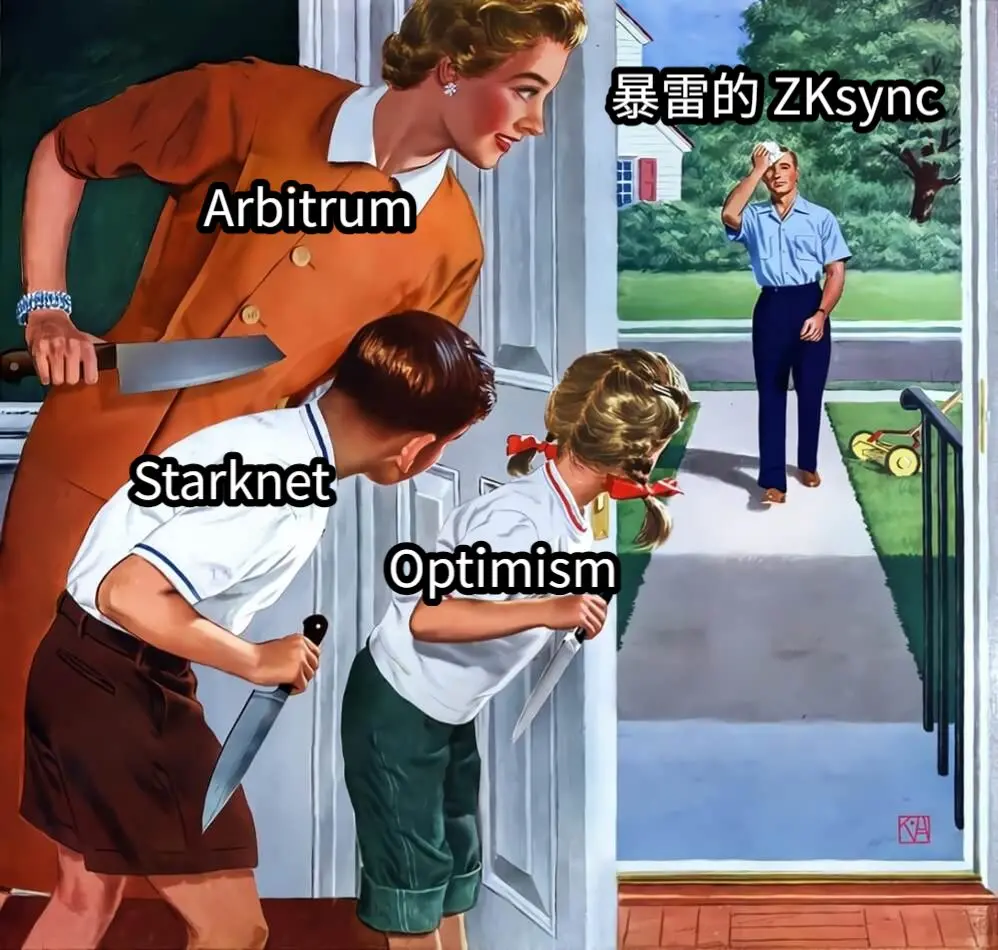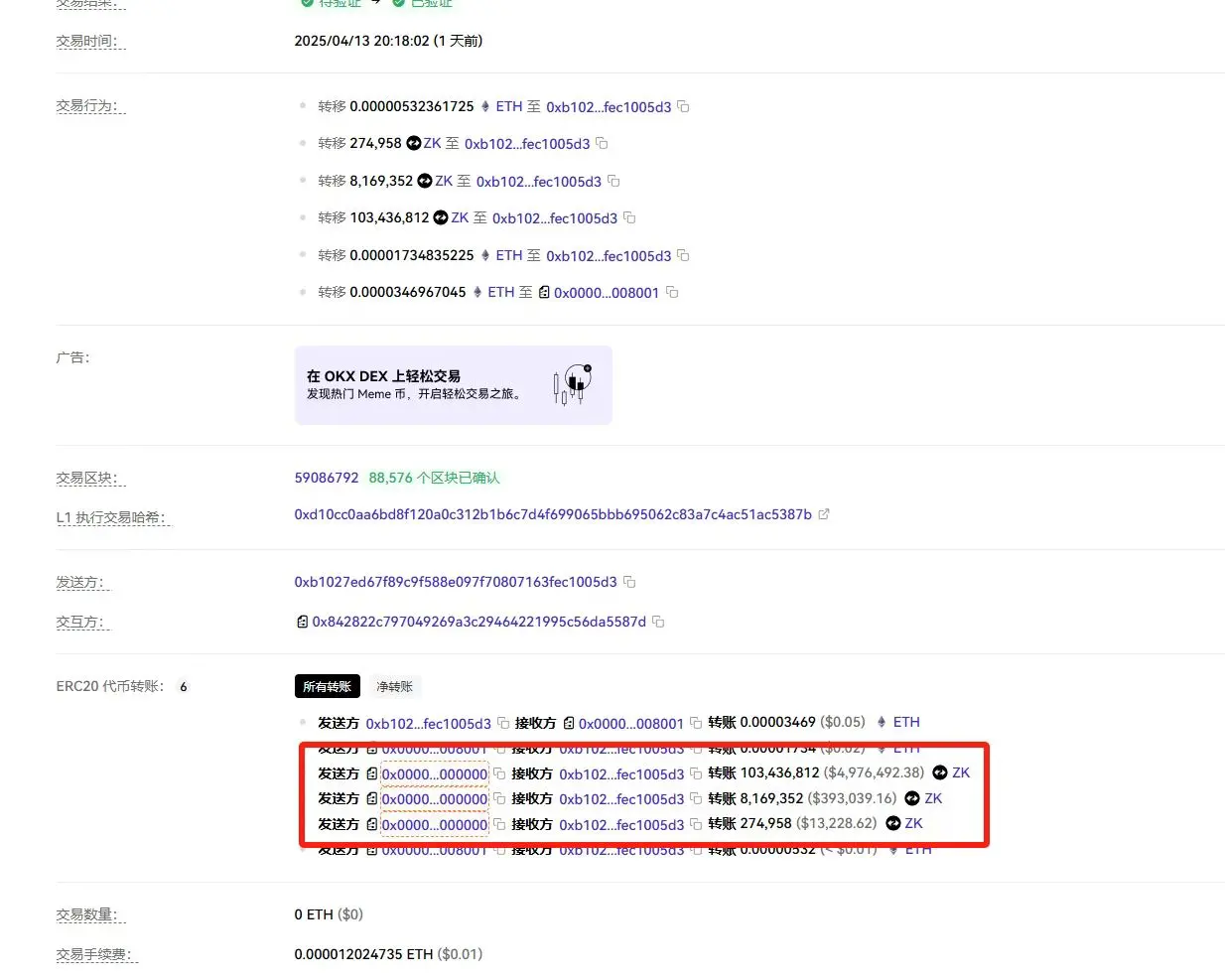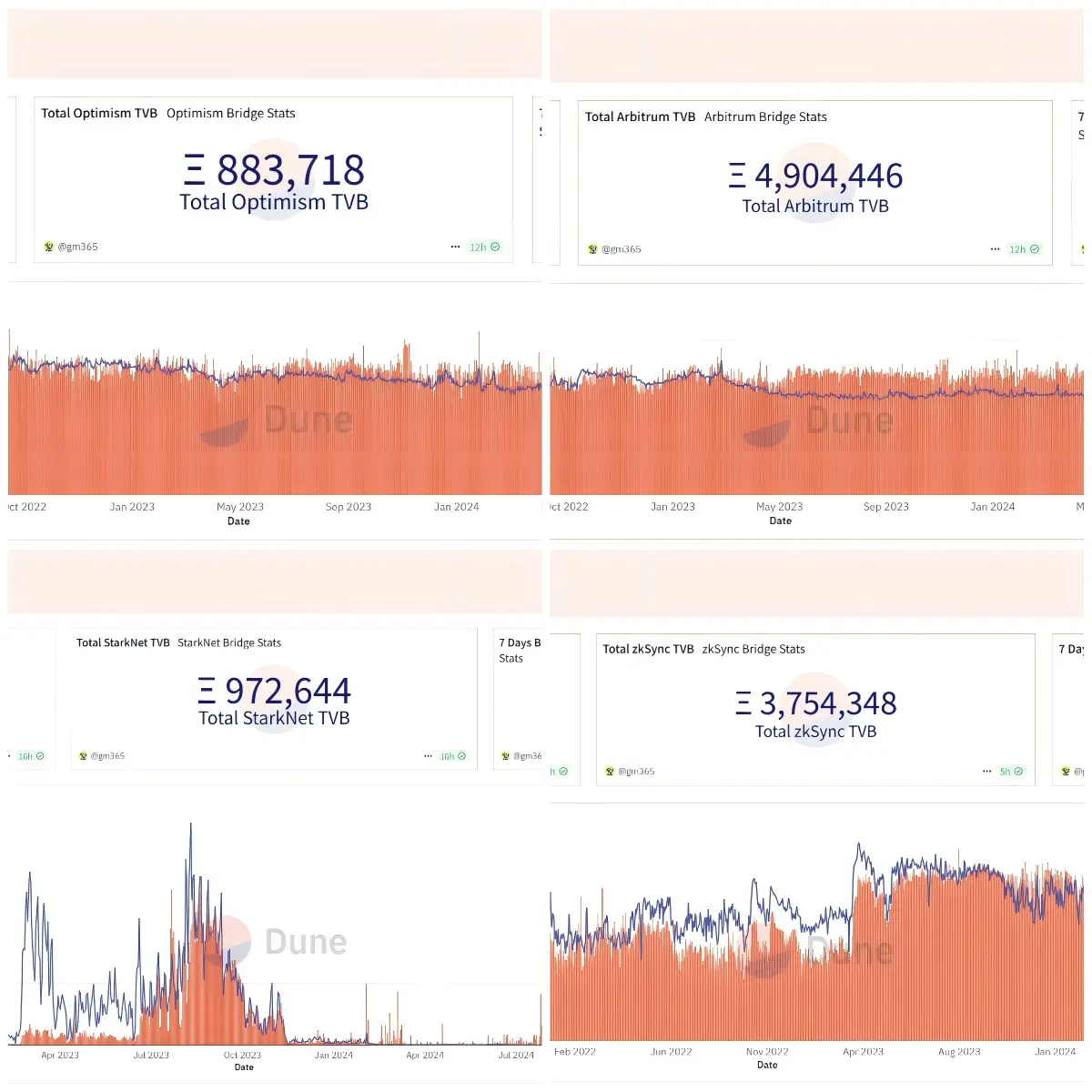author:Airdrop insulator Scof,
Edit: TB,

The incident was over
On the evening of April 15, ZKsync token ZK experienced an abnormal decline, with a drop of more than 14% within 24 hours, and the price fell below US$0.04 at one point. After the incident, Bithumb and other exchanges suspended ZK's recharge and withdrawal services.
According to on-chain data, the actual attack occurred at 8 pm on April 13 (UTC+8). The attacker used an administrator account to airdrop distribution contracts to call the sweepUnclaimed() function in the contract, and minted about 111 million unreceived airdrop tokens. Subsequently, the attackers sold about 66 million of the tokens one after another and transferred them across chains. By the time the incident was exposed on April 15, there were about 44.68 million tokens left in the attacker's address.

At 9 p.m. on April 15, the community first disclosed the abnormal behavior of additional issuance and sale on social platforms. ZKsync officials then responded, confirming that this was due to the leakage of the administrator keys of the three airdrop distribution contracts, resulting in abnormal minting. Officials said that the incident only involves airdrop contracts and does not affect the ZKsync protocol itself, the ZK token main contract, governance contract or other token distribution plans. The token circulation thus increased by about 0.45%, with a total value of about $5 million.
The ZKsync team coordinated with the exchange on the night of the incident, tried to freeze the relevant funds, and called on the attackers to return the tokens to avoid legal liability. The official emphasized that the attack path can no longer be reused and the rest of the current system has not been affected.
After the incident, the price of ZK token rebounded for a short time, but it still did not return to pre-event levels. As of now, the investigation is still in progress, and the project party said it will release further details.
The former king became "death of heaven"?

ZKsync, Arbitrum, Optimism and Starknet, which were once tied for the "Four Heavenly Kings" of Ethereum Layer2, are now completely different. It is worth mentioning that many of my peers around me started to contact the chain operation from the airdrop of these projects, and understood the basic concepts of wallet, interaction, and gas fees. These projects not only carry the technical practice of Ethereum expansion, but also to some extent, become the starting point for many people to enter the crypto world.
ZKsync and Starknet belong to the ZK Rollup route and were once regarded as representatives of the technology, focusing on higher security and data effectiveness. ZKsync takes zkEVM compatible with EVM as its selling point, hoping to reuse Ethereum ecological tools to lower the development threshold, while Starknet insists on its own development Cairo language system in exchange for higher performance potential, but also limits its ecological expansion. In contrast, Arbitrum and Optimism adopted the OP Rollup solution with earlier technology implementation, relying on optimistic proof to achieve transaction settlement and enter the market faster in terms of development toolchains and compatibility.
In terms of ecological construction, Arbitrum is undoubtedly the strongest project at present. Not only have native DeFi projects such as GMX gained a foothold, but the overall application layer distribution is also richer. Optimism's rhythm is more focused on governance and architecture expansion. It launched OP Stack and jointly launched Coinbase to launch the Base main network, which has initially built a "modular alliance chain". The ecological popularity of ZKsync is basically stuck before and after airdrops. After the airdrop, multiple projects ran away one after another, and the confidence of users and developers was seriously damaged. Starknet's development pace has been slow, and the progress of ecological expansion is relatively lagging.
In terms of user activity, Arbitrum has long been leading, with both active addresses and transaction volumes far exceeding the others, and Optimism follows closely. ZKsync hit a peak during the airdrop period, but its activity quickly fell, and its current daily active users have fallen to a low level. Starknet's data has been stable for a long time, but its growth is weak and it is always difficult to break through.

The number of locked positions on the chain can also be intuitively seen in the gap between projects. According to DefiLlama data, Arbitrum ranked first in the L2 TVL list with US$2.1 billion, with a certain economic self-circulation ability; Optimism also maintained high expectations with the expansion potential of OP Stack; ZKsync's revenue has been sluggish for a long time, and TVL has fluctuated in only a few event nodes, and has a long-term lack of growth momentum; Starknet also faces the problem of insufficient volume, with small revenue and locked stocks.
Judging from the fund bridging data, the gap in ecological activity among various projects is also very obvious. According to Dune data, the cumulative bridge volume of Arbitrum's official cross-chain bridge has exceeded 4 million ETH, ranking first in all Layer2 projects; ZKsync followed closely with a total of about 3.7 million. On the surface, the data is not low, but its activity has dropped significantly. In the past 7 days, only 14 users have used the ZKsync official bridge, with only 5 ETH total bridges, and are almost in a shutdown. In contrast, the total bridge volume between Optimism and Starknet is not high and has not yet exceeded 1 million ETH.

But it is worth noting that although Arbitrum performs steadily in the on-chain ecosystem, with active users and continuous progress in project implementation, its token price trend is not ideal. From last year's high of about $2.4, ARB prices have pulled back by more than 88%, but their current market value remains above $1.3 billion. Behind this contrast, perhaps it is closely related to the continuous release of circulation. Since the token was launched, Arbitrum has seen large amounts of unlocking many times, which has caused the market selling pressure to exist for a long time and the price trend is under pressure.
The four kings of Layer2 represent the future direction of Ethereum expansion, and the first stop for countless users to enter the market. But after experiencing technology implementation, airdrop game, safety accidents, and project differentiation, today's Layer2 track is no longer a highlight moment.
The once repeatedly emphasized "high performance, low cost, and strong security" now seems to be losing its appeal. How long can those narratives with Layer2 as the entrance to last? At a time when funds and attention are constantly outflowing, is Layer2 really a bridge to large-scale applications, or is it just a phased transition plan? Will the project that was originally highly anticipated eventually stop at the midfield of technological evolution?
















No comments yet